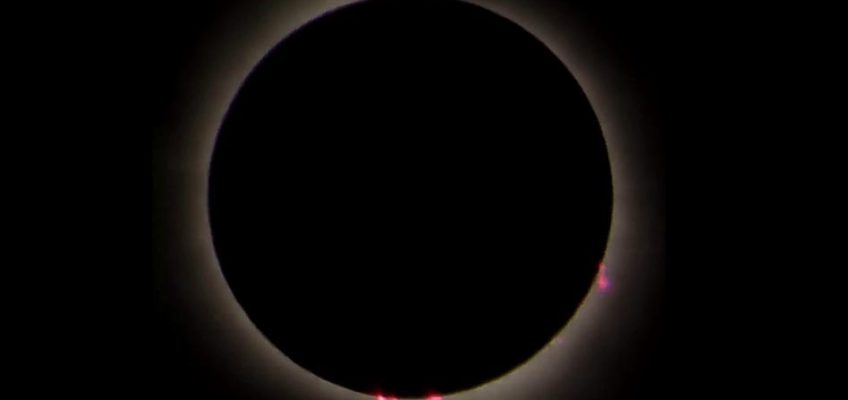Despite the clouds around here for the solar eclipse earlier this month, I hope some of you had a chance to see at least some of the solar eclipse. I was one of the millions who jumped into the car and traveled to the band of totality. I put nearly 1,700 miles on my van and drove through numerous early road construction projects, but it was so worth it! Our original plan was to drive to Corsicana, Texas, south of Dallas, but the weather forecast was just too dicey. So we drove to Cape Girardeau, Missouri, but were blown away by the crowds. There were so many people that cellphone service was nearly impossible. We managed to get a less-than-desirable motel room about 40 miles southeast of Cape Girardeau near the Kentucky border.
(Mike Lynch)
The next morning, we were up at 3:30. We drove through a dense fog north on I-57 and settled in the little town of Anna, Illinois. They have a huge city park, and we were the first people there. We found a perfect spot near the tennis courts. Gradually, we were joined by other eclipse chasers, but it was far from hoards across the Mississippi River in Cape Girardeau. The fog lifted, and the skies became absolutely clear. I had all my specially equipped telescopes and cameras ready. At 12:42, the moon’s disk made its first contact with the lower right side of the sun. For the next hour and 16 minutes, as the moon slid across the sun, daylight eerily faded, and the temperature dropped about 10 degrees. At 1:58, totality began with the stunning “diamond ring” effect as the last of the sun’s disk was eclipsed.
Attempting to put into words the four minutes and four seconds of totality is a challenge, but I’ll try my best. The experience was overwhelming, with some people yelling and others, like me, shedding tears. The sun’s outer atmosphere was in clear view, subtly and slowly changing shape. What was truly surprising was that even with the naked eye, we could see bright pink prominences arcing above the sun’s surface. I was incredibly fortunate to capture a photograph of them. The skies were dark enough in the vicinity of the eclipsed sun that stars were visible, including the bright planets Jupiter and Venus.
The author on the scene. (Mike Lynch)
The totality time passed all too quickly. As the moon’s disk began its retreat, we saw the diamond ring effect again. Shortly after, many folks around us were packing up and leaving, but we stayed until the very end, until the moon moved beyond the sun. Then, we joined everyone on the highway and started for home. Traffic was torturous, but the memory of what we witnessed made it much easier to take.
Unfortunately, the next total solar eclipse in the contiguous 48 states won’t be until 2045, but if you don’t mind a long plane ride, there will be many other total eclipses worldwide. Check out the NASA solar eclipse website. Personally, I’m interested in the one on Aug. 12, 2026, over portions of Iceland, Portugal, and Spain. I also would love to catch the one over Northern Alaska on March 30, 2033. You can watch a total eclipse by day and northern lights by night! I have total solar eclipse fever! Can you tell?
Mike Lynch is an amateur astronomer and retired broadcast meteorologist for WCCO Radio in Minneapolis/St. Paul. He is the author of “Stars: a Month by Month Tour of the Constellations,” published by Adventure Publications and available at bookstores and adventurepublications.net. Mike is available for private star parties. You can contact him at mikewlynch@comcast.net.
Related Articles
Skywatch: The lion has the hunter on the run
Skywatch: It’s solar eclipse time
Skywatch: A solar eclipse April
Skywatch: The wily rabbit of winter
Skywatch: Celestial signs of spring


Leave a Reply